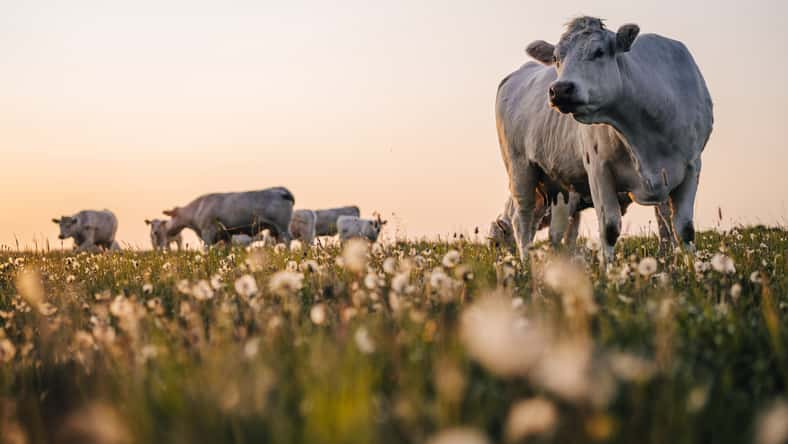Milk Sickness Was Rampant In The 1800s, Until A Woman Named Dr. Anna Got To The Bottom of This Mystery

In the Midwest, “milk sickness” was rampant, claiming the lives of thousands of Americans until one woman named Dr. Anna Bixby was able to determine the cause.
As settlers traveled into new territory with their livestock in the early 1800s, that was when the disease first made an appearance. People afflicted with the sickness experienced vomiting and weakness. It was often followed by delirium and a coma, eventually leading to death in many cases.
It usually struck in the summertime when the weather had been hot and dry. It was well-known that milk sickness came from drinking milk, but no one knew exactly why.
Nothing like this had ever been heard of in other parts of the world. The settlers were terrified. Some of them blamed witches or toxic vapors that rose from the ground. People even left certain areas in Indiana and Illinois, believing them to be cursed.
During that time, most families owned a milk cow that grazed in the fields surrounding their homes. By the 1820s, doctors and settlers came to the conclusion that the cows must’ve been ingesting some type of poison, which contaminated their milk and the humans who drank it.
Calves who consumed the milk also died, and so did some adult cows, although that was more of a rarity. But Dr. Anna was the one who was able to piece the puzzle together.
Dr. Anna was born in Philadelphia as Anna Pierce in the early 1800s. When she was a young girl, her family headed west and settled down in southern Illinois. Growing up, she was moved by the neighboring settlers’ poor health conditions and decided to study medicine.
Once she became a midwife, she traveled around the region, assisting with births, broken bones, and various illnesses. When milk sickness reached her area, her family was heavily affected by it. Anna’s mother and sister-in-law ended up dying from the disease. Her father was left in a debilitated state.
Anna took it upon herself to decipher this medical mystery. After charting the times that the sickness tended to flare up, she realized it was seasonal. It peaked in June, then dipped when the first frost arrived. So, she advised her neighbors to refrain from consuming milk and butter during the warmer months.

Ondra – stock.adobe.com- illustrative purposes only
Her next clue came from tracking the cattle and closely monitoring what they ate. She noticed that the cows seemed to eat anything in their paths, but the goats were more careful about what they chowed down on. She believed that a specific plant was the source of the poison but was unsure which plant it was exactly.
While observing the cattle, she ran into an elderly Shawnee woman. When the woman found out what Anna was doing, she directed Anna to a weed that was said to make cows sick and their milk toxic.
This weed was called white snakeroot. Anna conducted an experiment with the weed, feeding it to young calves. After the calves had eaten the plant, they promptly displayed the typical symptoms of milk sickness.
The reason adult cows weren’t affected by white snakeroot was that lactating cows could release the poison from the weed through their milk ducts. But for other animals, the poison could not be excreted and ended up accumulating in their bodies.
Anna spread the word about her discovery. The men in the county combed the fields and forests to eliminate the plant. Anna even sent letters to physicians, telling them of her findings, but unfortunately, her idea took years to reach others.
At that time, most male physicians were not inclined to take the advice of a woman. In 1862, which was nearly thirty years after her discovery, the disease was still wreaking havoc on some parts of the Midwest.
By 1900, milk sickness finally became less common due to industrialization. More safety standards were established regarding the processing of milk.
In 1927, researchers published a report about the harmful properties of white snakeroot. However, Anna’s contributions were not mentioned. It wasn’t until the 1960s that Anna was given recognition for her work.
If true crime defines your free time, this is for you: join Chip Chick’s True Crime Tribe
I’m Sure You’ve Heard About The Royal Ballet, But Do You Know The Story of The Woman Who Founded It?
Seamlessly Transition Your Home Decor From Summer To Fall With These Simple Tips
Here’s How You Can Easily Make Tacos Using A Bundt Pan
Sign up for Chip Chick’s newsletter and get stories like this delivered to your inbox.
More About:Freaky





